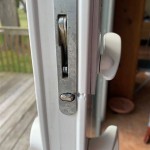Calculating Bricks Needed For Your Patio Project
Creating a brick patio can significantly enhance the aesthetic appeal and usability of any outdoor space. However, accurately estimating the number of bricks required is crucial for efficient project management and cost control. Underestimating can lead to delays and additional trips to the supplier, while overestimating results in unnecessary expenses and potential storage issues. A precise calculation ensures a smooth installation process and minimizes material waste.
This article provides a detailed guide to calculating the number of bricks needed for a patio project, covering essential factors such as measuring the patio area, determining brick dimensions and joint size, accounting for breakage, and considering pattern complexities. By following these steps, homeowners and contractors can confidently plan their patio projects and achieve desired results.
1. Measuring the Patio Area
The initial step in determining the number of bricks required involves accurately measuring the area of the patio. The shape of the patio will dictate the specific measurement techniques to be employed. For rectangular or square patios, the process is straightforward: measure the length and width of the area and multiply these two values to obtain the total square footage.
For instance, a rectangular patio that is 12 feet long and 10 feet wide has an area of 120 square feet (12 ft x 10 ft = 120 sq ft). This seemingly simple calculation forms the foundation for subsequent steps.
However, many patios are not perfect rectangles or squares. Irregular shapes require a different approach. One common method is to divide the irregular shape into smaller, more manageable geometric figures, such as rectangles, squares, triangles, and circles. Calculate the area of each individual shape and then sum these areas to obtain the total patio area.
For example, a patio might consist of a rectangular section and a semi-circular section. Calculate the area of the rectangle as described above. For the semi-circle, measure the diameter, divide it by two to find the radius, and then use the formula for the area of a circle (πr²) and divide the result by two. Adding the rectangle's area and the semi-circle's area provides the total patio area.
Another technique for irregular shapes involves using a grid system. Overlay a grid of known dimensions (for example, 1 foot by 1 foot squares) onto the patio area. Count the number of full squares within the patio's boundaries, then estimate the area covered by partial squares. Add these values to approximate the total area.
Regardless of the method employed, accuracy is paramount. Double-check all measurements to minimize errors. Even small discrepancies can accumulate and lead to significant miscalculations in the final brick count.
2. Determining Brick Dimensions and Joint Size
Once the patio area is known, the next step is to determine the dimensions of the bricks that will be used and the size of the joints between them. Brick dimensions are typically standardized, but variations exist depending on the manufacturer and the specific type of brick. Obtain the exact dimensions of the chosen brick, including length, width, and thickness. This information is usually available on the manufacturer's website or packaging.
The joint size, also known as the mortar joint or the gap between bricks, is another critical factor. Joint size can vary depending on aesthetic preferences and the desired degree of water permeability. A typical joint size ranges from 3/8 inch to 1/2 inch. Larger joints may be used for a more rustic appearance or to allow for better drainage.
To calculate the area each brick will cover, including the joint, add the joint size to both the length and width of the brick. For example, if a brick is 8 inches long and 4 inches wide, and the desired joint size is 1/2 inch, the effective length of the brick becomes 8.5 inches (8 + 0.5), and the effective width becomes 4.5 inches (4 + 0.5).
Convert these dimensions to feet by dividing by 12. In the previous example, the effective length becomes approximately 0.708 feet (8.5 / 12), and the effective width becomes approximately 0.375 feet (4.5 / 12). Multiply these two values to obtain the area covered by each brick, including the joint: 0.708 ft x 0.375 ft = 0.266 sq ft.
Now, divide the total patio area by the area covered by each brick. Using the previous example where the patio area is 120 square feet, the calculation would be 120 sq ft / 0.266 sq ft/brick = approximately 451 bricks. This represents the theoretical number of bricks required, assuming perfect cuts and no breakage.
3. Accounting for Breakage and Waste
In reality, some bricks are likely to break during transportation, handling, or installation. Additionally, some bricks will need to be cut to fit around the edges of the patio or to accommodate obstacles such as plants or structures. Therefore, it is essential to account for breakage and waste when calculating the total number of bricks needed.
A general rule of thumb is to add an extra 5% to 10% to the initial brick count to account for breakage and waste. The percentage depends on the complexity of the patio design and the experience level of the installer. For simple rectangular or square patios with minimal cutting, 5% may be sufficient. For more intricate designs with curved edges or numerous obstacles, 10% or even 15% may be necessary.
Using the previous example of 451 bricks, adding 5% for breakage and waste results in an additional 23 bricks (451 x 0.05 = 22.55, rounded up to 23). Therefore, the total number of bricks needed would be 474 (451 + 23). Adding 10% would result in an additional 46 bricks (451 x 0.10 = 45.1, rounded up to 46), bringing the total to 497 bricks (451 + 46).
It is always prudent to err on the side of caution and order slightly more bricks than initially calculated. Unused bricks can be stored for future repairs or used in other landscaping projects. Running out of bricks mid-project can cause delays and potentially require a special order, which may be more expensive and time-consuming.
4. Considering Pattern Complexities and Specialized Cuts
The complexity of the chosen bricklaying pattern can also influence the number of bricks required. Simple patterns, such as a running bond or a herringbone pattern, typically result in less waste than more intricate patterns. Patterns that require a significant number of cuts, such as circular or fan patterns, will inevitably generate more waste.
For complex patterns, consider creating a detailed layout plan before purchasing the bricks. This plan can help visualize the cuts that will be required and estimate the amount of waste that will be generated. Specialized cutting tools, such as a wet saw, can help minimize waste and create clean, precise cuts. However, even with the use of specialized tools, some breakage and waste are inevitable.
When calculating the number of bricks needed for complex patterns, it may be helpful to consult with an experienced bricklayer or landscape contractor. These professionals can provide valuable insights and advice on estimating waste and optimizing the layout plan to minimize the number of bricks required.
Furthermore, if the pattern incorporates different sizes or shapes of bricks, each type must be calculated separately. Determine the proportion of each brick type in the overall pattern and then calculate the number of each type needed based on the total patio area and the respective dimensions, including joint sizes, for each brick type.
For example, if a patio design uses a combination of standard bricks and smaller accent bricks, calculate the area covered by each type of brick and adjust the calculations accordingly. Ensure that the correct number of each brick type is ordered to avoid delays and ensure the design's integrity.
In addition to pattern complexities, consider any specialized cuts needed to accommodate features such as steps, retaining walls, or drainage systems. These features may require custom-cut bricks to ensure a seamless and aesthetically pleasing integration. Account for the additional waste that may be generated when creating these specialized cuts.
By carefully considering pattern complexities, specialized cuts, and the potential for waste, a more accurate estimate of the total number of bricks needed can be achieved, leading to a more successful and cost-effective patio project.

Paver Calculator And Estimator Inch

Paver Calculator

Paver Calculator

Paver Calculator Efficient Project Planning And Estimation

Brick Calculator Estimate Bricks And Mortar Inch

2024 Paver Base Calculator Homeadvisor

2024 Patio Paver Calculator Stone Block Brick Homeadvisor

How To Calculate The Costs Of Stone Concrete And Brick Patio Pavers

Paver Calculator How Many Pavers Do I Need

Paver Calculator Efficient Project Planning And Estimation








